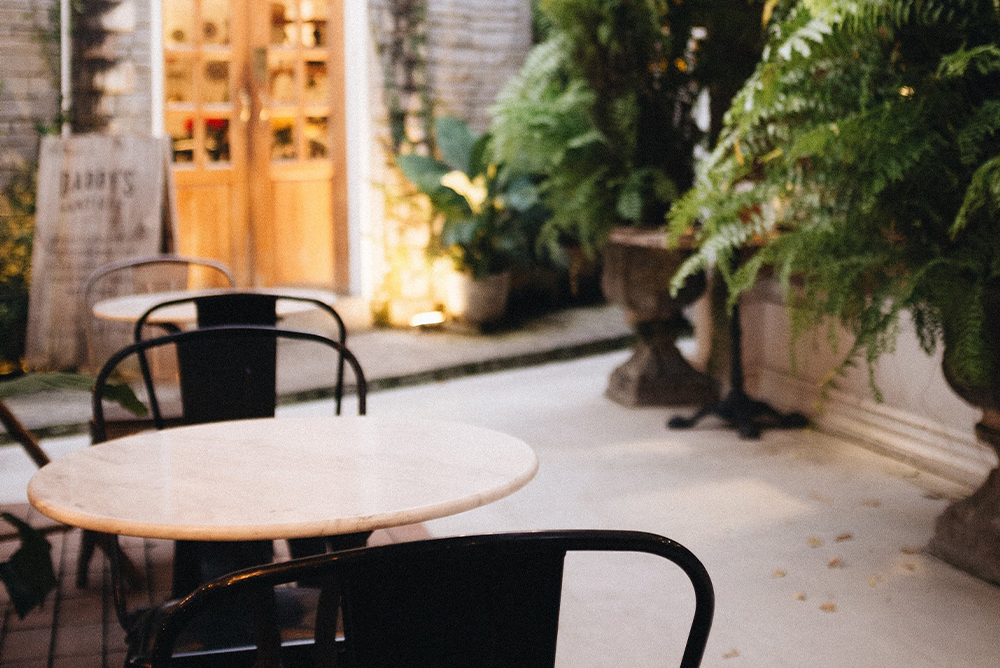
Courtesy of Cole Patrick on Unsplash.
I am alone, sitting in a restaurant in Jerusalem.
I order a Kanafeh for me and my friend—
who never arrives. The waiter makes a noise when
he puts the dishes on the empty table.
I ask for a cup of tea; I like to amuse the self,
the impatient self, with the presence of things on the table.
The smell of semneh in the Kanafeh is so strong; it tickles my nose
and opens the door for my tongue to taste.
I take another bite, a big one;
and it as if I swallowed the word itself with its alphabet
into my body. The Kanafeh gets dissected into two halves;
two other words appear in my sky: kanaf and knaf,
On the right side, kanaf in Hebrew –forms a wing
and on the left side, I see kanf in Arabic– meaning care;
It also manifests a wing, so I decide to
fly with my thoughts for a while.
The two wings take me to another land,
where Arabs and Jews are sitting around a table;
they share their mixed food together, including their different
alphabets, which fly on the kanaf of their souls as guards—watching over their
shared sky.
The phone rings and I wake up from my silent dream;
I come back to reality and its layers—the pile of conflicts.
I stare at the layers of the Kanafeh,
and I see a thin conflict lies here within the pastry.
It has been molded for years, preventing two friends—
a Jew and an Arab—from being gathered, here, in such a place,
where a Kanafeh offers them two wings to travel away.
I ask the waiter to knaf (wrap up) the Kanafeh to take away—
..home.



